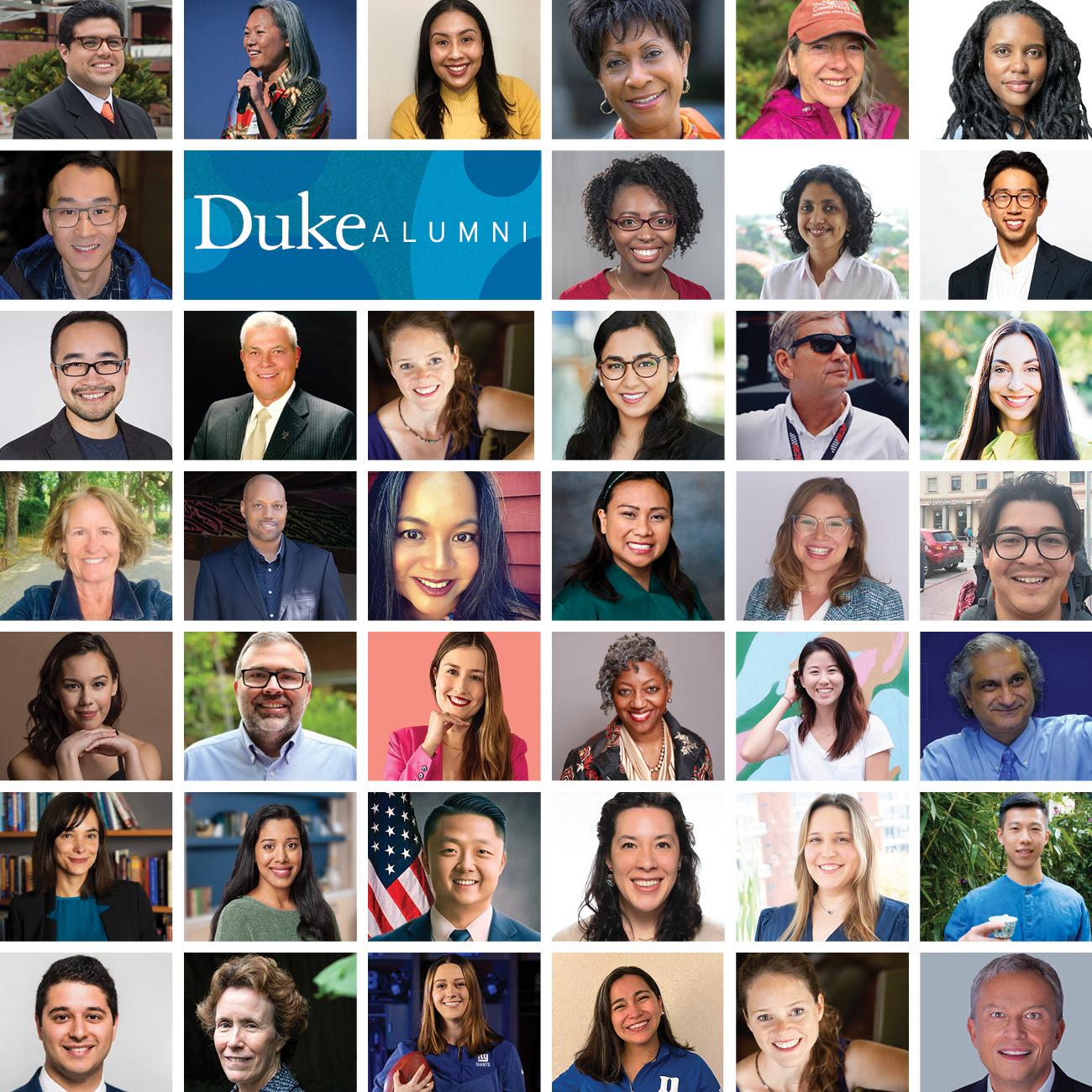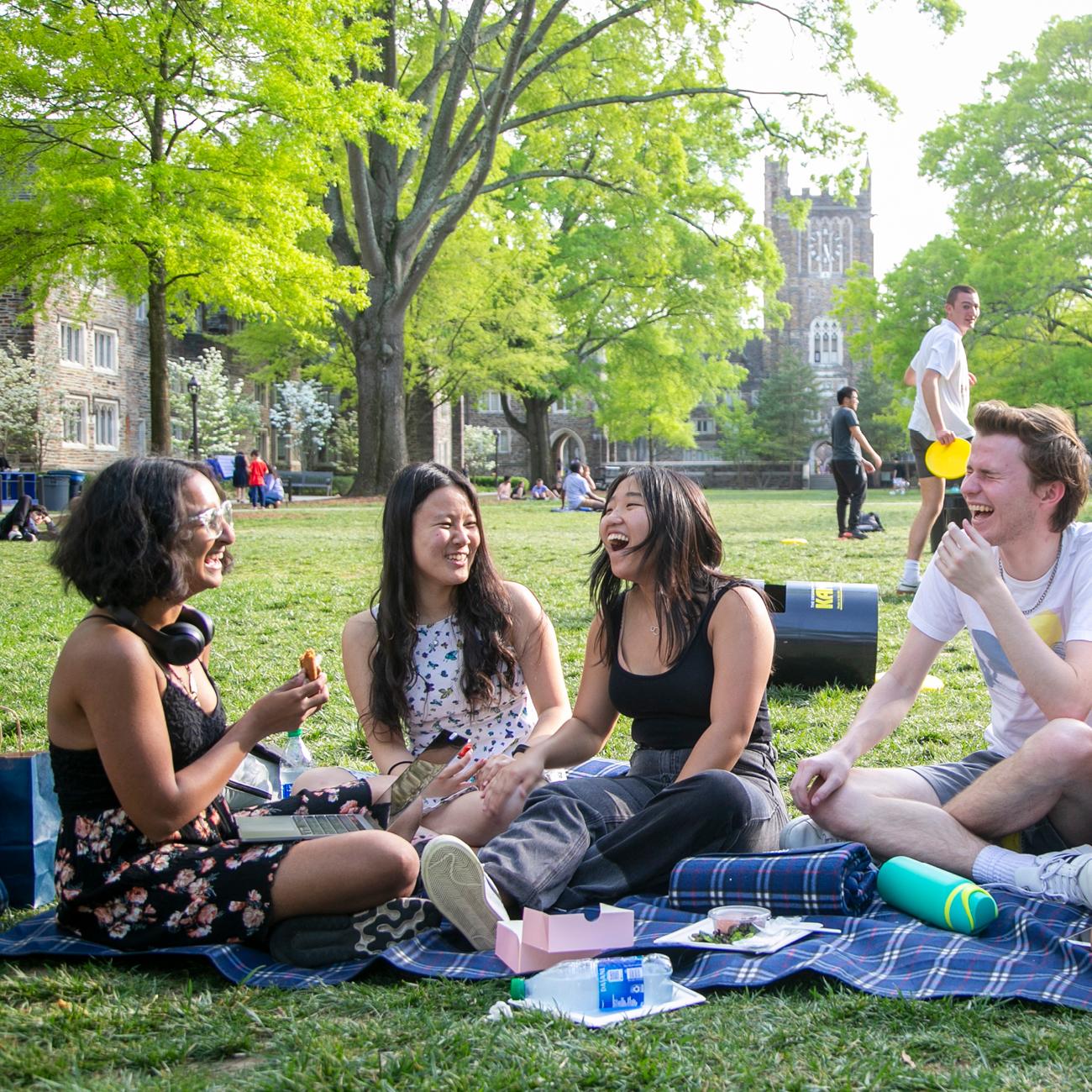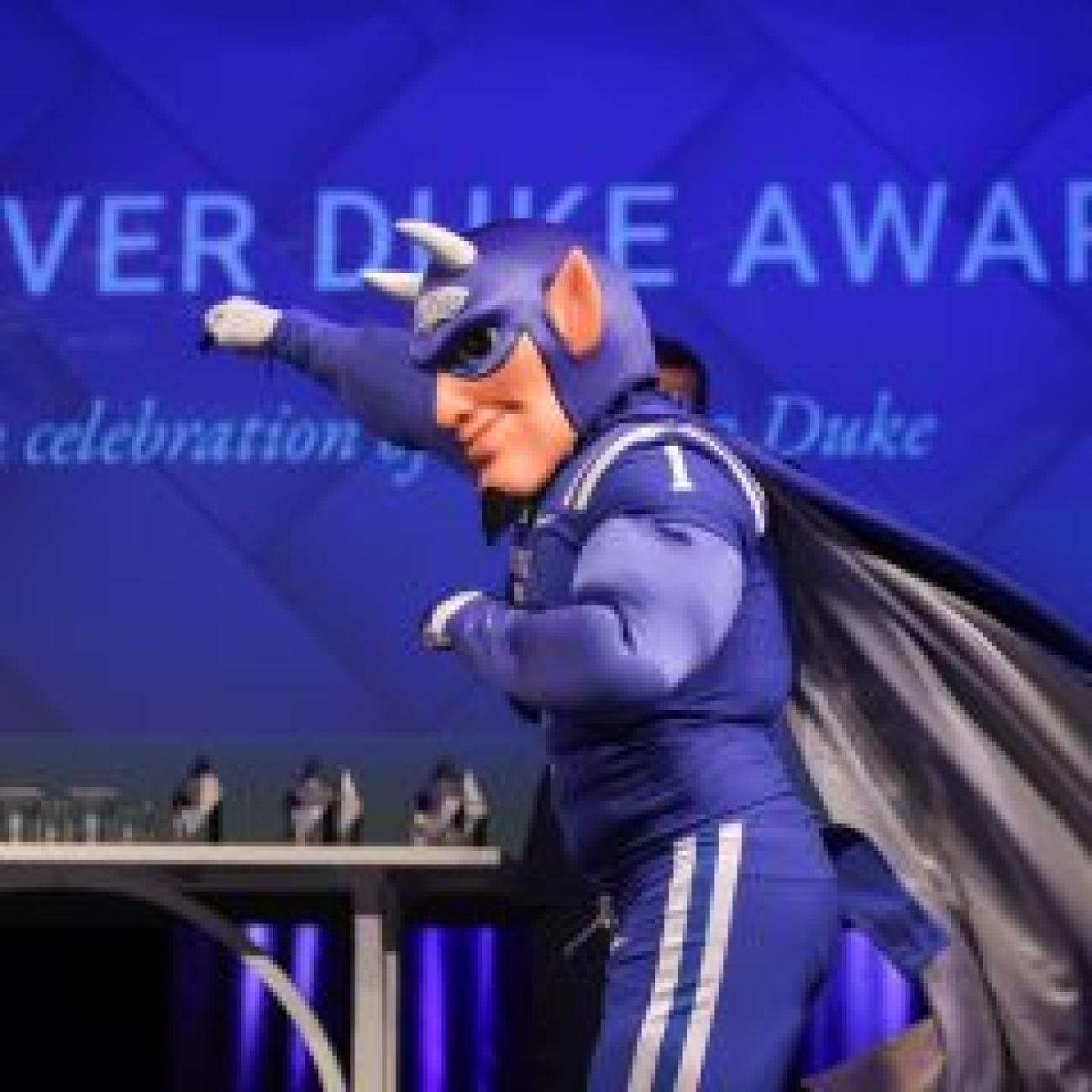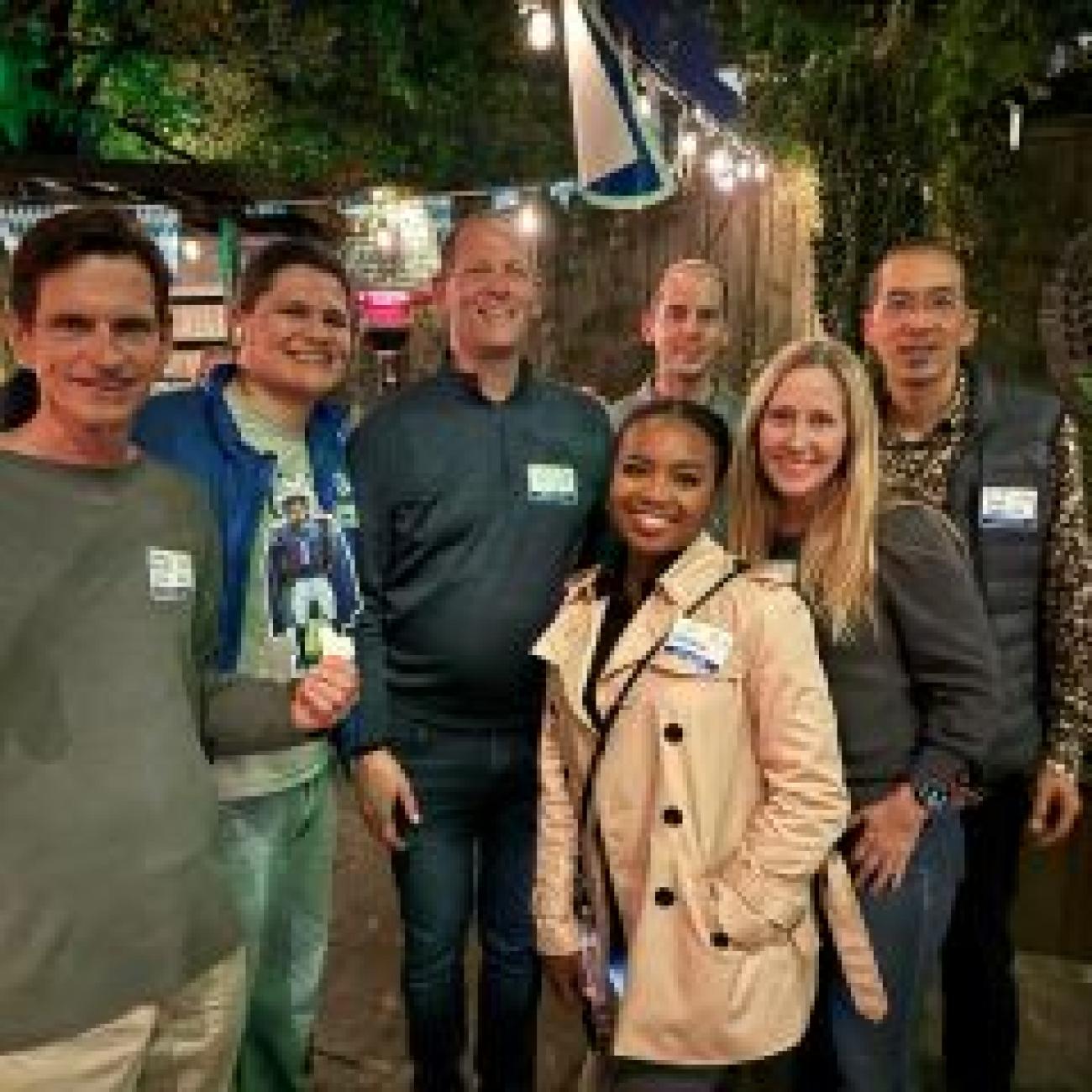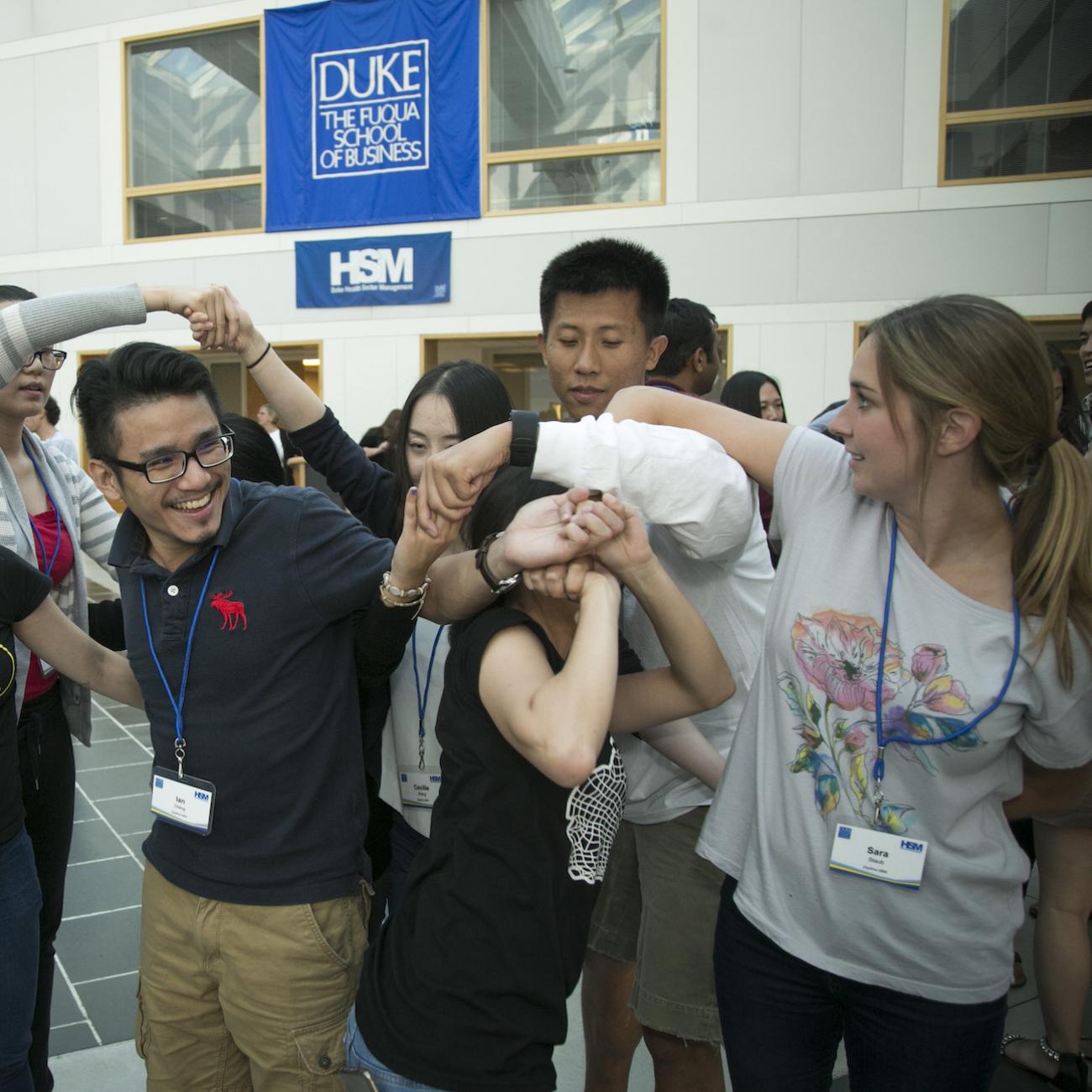Ahead of the Curve
Duke pandemic seminar predicted a COVID-type outbreak with a simulation that rings true a decade later.
While the COVID-19 pandemic took many people by surprise, more than 100 Duke alumni who participated in Winter Forum nine years earlier knew it was only a matter of time before a worldwide infectious disease outbreak.
Winter Forum, a three-day annual seminar in advance of the spring semester, was titled “Pandemic 2011” that year. Sponsored by the Duke Global Health Institute (DGHI) and the Office for Undergraduate Education, the immersive experience wrestled with questions regarding emergency preparedness, access to treatment, vaccine development, and the role the media plays in public health. Faculty simulated a pandemic by featuring prerecorded television news reports, lectures from pandemic experts, and a keynote address from the principal deputy director of the Centers for Disease Control and Prevention (CDC), Anne Schuchat.
At our welcome dinner, we were abruptly interrupted by "breaking news," in which (then) President Brodhead had been quarantined due to infection of some novel virus he had contracted on a recent visit to China.
— Jason Maher ’15
“At our welcome dinner, we were abruptly interrupted by ‘breaking news,’ in which the (then) Duke University president, Dr. Richard Brodhead, had been quarantined due to infection of some novel virus he had contracted on a recent visit to China,” says Jason Maher ’15, who is currently pursuing a master’s in public health. “The immersive nature of the experience was sobering and impactful. I couldn’t help but remember this moment in January this year when COVID-19 was declared a Public Health Emergency of International Concern by the World Health Organization.”
As former students and faculty involved in the event attest, there were several similarities between the simulated pandemic and COVID-19.
Anna Lipkin ’14 expected the simulation to primarily delve into the science behind a pandemic response, but the course correctly predicted that public policy would play a factor in the world’s ability to slow the spread of a virus. “I was a basic sciences student, and so the emphasis on policy over science surprised me,” noted Lipkin. “But now, in this pandemic, it’s clear that policy, not strict lab science, is what will make or break us.”
Others recalled discussing the ethics of allocating limited resources in the simulation, which has played out in the real world of 2020. “The Winter Forum introduced me to the various theories of resource allocation, with the example they used being ventilator availability,” says Taylor Aiken ’12. “I thought a lot about this in April as there were concerns about shortages in New York.”
The simulation even touched on the role xenophobia and racism would play in the response to a pandemic, forecasting that, like COVID-19, disadvantaged populations would be disproportionately impacted and harmful rhetoric would spread with the virus. “We actually simulated that some would label the disease the ‘Chinese virus’ to emphasize how racism would have a harmful impact in a pandemic,” says David Boyd, Ph.D., who helped coordinate the three-day event and serves as Professor of the Practice of Global Health at DGHI.
Of course, not everything about the simulated pandemic mirrored COVID-19. “We did not create a virus that could be readily transmitted between people who were infected but asymptomatic,” Boyd says. “If you asked me six months ago if that were possible, I would’ve laughed at you and said ‘no.’ But that’s an example of how we’re learning new things constantly.”
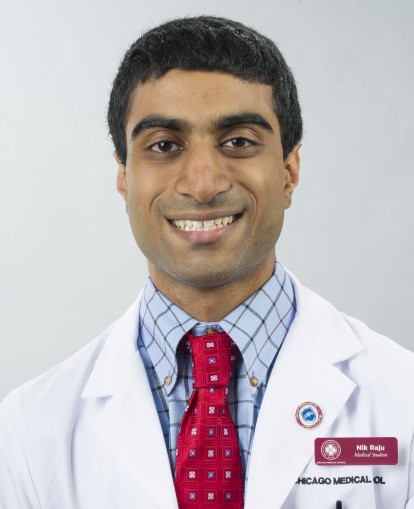
“Pandemic 2011” also wasn’t able to fully account for how various political interests would convolute a nation’s message to its citizens. “The communication to the public was clearer regarding the dangers of the virus in our simulated pandemic,” says Nik Raju ’13. “Our simulation was not politicized, and the public seemed to have trust in the health officials, doctors and scientists at that time, which made it easier to be resolved. During the current pandemic, the message and preparedness efforts have been led by politicians instead of medical and public health professionals, leading to inconsistent messages to the public regarding the gravity of the situation.”
Raju credits “Pandemic 2011” for influencing his path after Duke. “The experience reaffirmed my interest in a career in medicine and public health,” Raju says. “After the Winter Forum, I participated in a two-month Epidemiology Elective Program for medical students at the CDC in Atlanta. Currently, I am a second-year resident physician in psychiatry at Rosalind Franklin University of Medicine and Science. During my residency, I’ve been involved in the care of medical and psychiatric patients who have been afflicted with COVID-19. I am now also beginning to see the mental health effects of the virus, and have developed a new interest in the psychological and mental health effects of pandemics.”
Raju isn’t the only Winter Forum alum who is applying the lessons learned in the simulation to the real-world fight against COVID-19. Rebecca Kahn ’13 is on the front lines of the COVID-19 response and considers “Pandemic 2011” a launching point in her career. “That event played a huge role in my decision to do the global health capstone and really sparked my interest in infectious diseases,” says Kahn. “I’ve since worked with The President's Emergency Plan for AIDS Relief on the global HIV response, worked with Partners in Health in Sierra Leone during the West African Ebola outbreak, and I’m currently pursuing a master’s and Ph.D. in infectious disease epidemiology. I’m actually doing a fellowship at the CDC this summer where I'm deployed to work in the modeling unit on the COVID response.”

There are those who saw a COVID-type outbreak coming, like the former students who participated in the “Pandemic 2011” simulation nine years ago, and then there are those who were blindsided by this pandemic and are still trying to make sense of this new reality. When asked to give his advice to those in the latter group, Maher says, “When it comes to the information on which you rely, always check your sources and be critical. Even scholarly articles must be peer reviewed, and the results they publish may show an association between two variables, but that doesn’t necessarily mean a definitive conclusion. Check sample sizes, remember that any research on COVID-19 is very new, and read for content, not inference.”
Raju keeps his advice simple. In a nod to the (as he put it) “clearer” messaging the simulation modeled, he says, “Every single one of us needs to continue doing our part in curtailing this pandemic. This includes wearing masks when interacting with other people, maintaining physical distance in close quarters, and adhering to proper hand hygiene techniques. We must also make an effort to be kind and respectful to each other during these challenging times when we have less interaction with other people, especially those from different backgrounds.”
It’s clear the 2011 Winter Forum helped contribute to the field of experts doing their part make the world safer during the current crisis. The effort to slow the spread of COVID-19 will take more than just the experts, though, as the simulation back in 2011 accurately projected: it will take all of us.








